



1965
January 1965
Ayn Rand attacks U.N.C.L.E. in the latest issue of her monthly publication The Objectivist Newsletter, blasting “tongue-in-cheek thrillers” such as The Avengers, the James Bond movies and especially “a peculiarly inept, incoherent, unfocused show entitled The Man From U.N.C.L.E.” Such humor, Rand postulates, undermines the heroic ideals of characters such as Ian Fleming’s literary Bond — although she seems more alarmed by the possibility that U.N.C.L.E. could be a “world government police” organization, that it employs a Russian agent, and that Sam Rolfe was quoted in TV Guide as preferring “international intrigue…with comic overtones” over “doing anti-Communist stuff every week.”
Monday, Jan. 11, 1965
The Man From U.N.C.L.E. moves to new 8 p.m. Monday timeslot
where show’s popularity and Nielsen ratings begin to rise dramatically.
With “Goldfinger” packing theaters and U.N.C.L.E. drawing ever-
increasing numbers of TV viewers, the spy craze breaks wide open
in winter and spring of 1965.
Tuesday, Jan. 12, 1965
Hullabaloo premieres on NBC in U.N.C.L.E.’s former timeslot.
Wednesday, Jan. 13, 1965
Shooting starts on “The See-Paris-and-Die Affair,” with instrumental group called the Gallants performing in scenes set in a Paris nightclub. Top Hollywood session players H.B. Barnum, Gerald Wiggins, Earl Palmer and — no kidding — Jimmy Bond are the Gallants, appearing in this episode to promote their recording of Jerry Goldsmith’s U.N.C.L.E. theme.
Monday, Jan. 18, 1965
The Gallants record background music for “The See-Paris-and-Die Affair.” Remainder of the episode’s score is made up of music written by Stevens and Scharf for earlier episodes.
February 1965
Finalizing its 1965-66 schedule, NBC rejects “The Ghostbreaker” pilot that was expected to be Arena’s fifth straight series. Kerwin Mathews, Diana van der Vlis and Norman Fell would have been the regulars in a series about a college professor who investigates apparently supernatural events.
February 1965
NBC circulates a tentative 1965-66 schedule to advertising agencies. Star Trek, a new science fiction series starring Jeffrey Hunter as the captain of a 22nd century spaceship, is penciled in for Friday night. Notably absent from the schedule is The Man From U.N.C.L.E.
February 1965
Capitol Records releases “The Man From U.N.C.L.E.,” 45-r.p.m. single by the Gallants (with H.B. Barnum tune “The Vagabond” on the flip side), the first record to include music from U.N.C.L.E.
Friday, Feb. 12, 1965
A sign of U.N.C.L.E.’s growing success: “The Woman From A.U.N.T.” sketch on tonight’s Bob Hope special.
Monday, Feb. 15, 1965
“The Greatest Story Ever Told,” epic movie whose huge cast includes David McCallum as Judas Iscariot, is finally released. McCallum moved from England to Hollywood in 1963 for this role.
Monday, March 1, 1965
“The See-Paris-and-Die Affair” airs on NBC with a big, fat plug for the U.N.C.L.E. record, a separate card in the end credits that reads, “The Man From U.N.C.L.E. Theme recorded by The Gallants.” Barnum, Wiggins, Palmer and Bond also are identified as the Gallants in screen credit “as Nightclub Musicians.”
Wednesday, March 3, 1965
NBC announces The Man From U.N.C.L.E.’s renewal for a second season, moving to Fridays at 10 p.m. — and in color!
Monday, March 8, 1965
Last day of shooting on “The Odd Man Affair,” final episode of the season.
Friday, March 26, 1965 / circa
Sam Rolfe leaves U.N.C.L.E. and Arena to pursue new projects. David Victor, who produced the first four seasons of Dr. Kildare, becomes new producer of The Man From U.N.C.L.E.
April 1965
Second U.N.C.L.E. movie, “The Spy With My Face,” is released in minor overseas markets.
April 1965
The Man with the Golden Gun is serialized in the April, May, June and July issues of Playboy.
Thursday, April 1, 1965
The Man with the Golden Gun, thirteenth Bond book and final novel written by Ian Fleming, is published in England.
Saturday, April 3, 1965
CBS joins the spy trend with the debut of Secret Agent, starring Patrick McGoohan as John Drake, now a British Intelligence agent. This one-hour revival of Danger Man premiered in Britain in October 1964. CBS creates new titles and theme song for American broadcasts.
Monday, April 5, 1965
NBC airs “The Gazebo in the Maze Affair,” episode written by Antony Ellis (and rewritten by Dean Hargrove, who shares teleplay credit). Ellis also wrote the 1954 “Casino Royale” teleplay.
Monday, April 26, 1965 / circa
New U.N.C.L.E. producer David Victor signs mystery writer Henry Slesar to adapt his novel The Bridge of Lions into a two-part U.N.C.L.E. story that also can be re-edited into another U.N.C.L.E. movie.
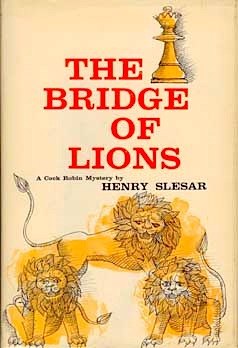
May 1965
Ace Books releases first original paperback novel based on The Man From U.N.C.L.E., written by prolific paperback hack Michael Avallone and subtitled “The Thousand Coffins Affair” on inside page.
Sunday, May 2, 1965
U.N.C.L.E.’s influence and popularity are now undeniable: Tonight’s episode of My Favorite Martian sends Tim O’Hara and Uncle Martin undercover against evil spy group called CRUSH. The episode even includes an imitation of U.N.C.L.E.’s famous scene-changing zip pan.
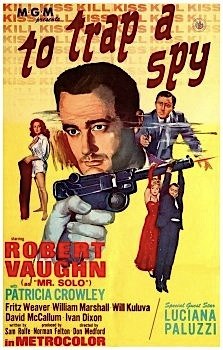
“To Trap a Spy,” feature-length movie made by adding footage to The Man From U.N.C.L.E.’s pilot film, opens in London at the Ritz Theatre in Leicester Square. Theater reports its best box-office week in two years.
Thursday, May 20, 1965
Sam Rolfe files separation of rights claim with the Writers Guild of America, West, over his contribution to creation of The Man From U.N.C.L.E.
June 1965 / circa
MGM’s publicity department creates the U.N.C.L.E. Inner Circle fan club to handle the phenomenal fan reaction to the series, allegedly operated by a “Squadron Leader Mark Whitsett, Ret.” Two dollars in annual dues brings an assortment of U.N.C.L.E. ID cards, bumper stickers, printed “autographed” photos, book covers and an occasional mimeographed newsletter. In its two-and-a-half years of operation, the Inner Circle publishes only two “journals,” 6-by-9-inch booklets with color covers and standard promotional photos and releases inside — the first in the spring of 1966, the second at the end of 1967, announcing the show’s cancellation and the Inner Circle’s disbanding.
June 1965
Gold Key Comics releases first issue of The Man From U.N.C.L.E. comic book.
June 1965
The “Napoleon Solo Gun,” Ideal Toys’ $4.99 plastic version of the U.N.C.L.E. Special complete with attachments, goes on sale. Gun is the first of a veritable flood of U.N.C.L.E. toys and games, but fans are disappointed to find that Ideal’s gun bears only a passing resemblance to the real U.N.C.L.E. Special.
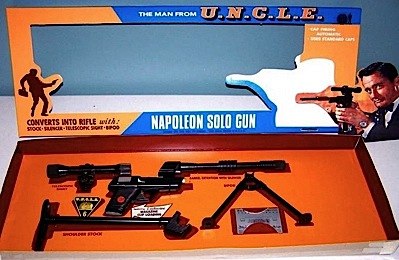
Wednesday, June 16, 1965
Second season begins shooting with “The Ultimate Computer Affair.”
Thursday, June 24, 1965
The Man From U.N.C.L.E. premieres in Great Britain at 8 p.m. on BBC1. “The Quadripartite Affair” is the first episode seen in the U.K.
July 1965
U.N.C.L.E. reaches another milestone in popularity: a parody in Mad. Issue number 96 includes “The Man from A.U.N.T.I.E.,” illustrated by Mad’s brilliant caricaturist, Mort Drucker.
Thursday, July 15, 1965
Shooting starts on “The Alexander the Greater Affair,” show’s first two-part story also slated to become the third feature film.
August 1965
Marvel Comics introduces Nick Fury, Agent of S.H.I.E.L.D. strip in Strange Tales #135. Originally planned as Marvel’s nod to the spy trend by introducing World War II hero Fury as a present-day CIA agent, U.N.C.L.E. influence instead results in creation of S.H.I.E.L.D. (Supreme Headquarters International Espionage Law-enforcement Division), worldwide organization that battles evil international conspiracy called HYDRA. Entrance to S.H.I.E.L.D. secret headquarters is under a barber shop, rather than behind a tailor shop.
Thursday, Aug. 5, 1965
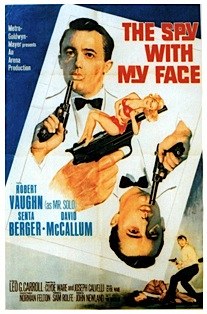
Monday, Aug. 9, 1965
Lalo Schifrin records his radically new arrangement of Goldsmith’s U.N.C.L.E. theme for the show’s second season, at the same recording session for his second and final U.N.C.L.E. score for “The Ultimate Computer Affair.”
Wednesday, Aug. 18, 1965 / circa
NBC programming executive Ross Donaldson tells Felton the network would welcome a “Lady from U.N.C.L.E.” spin-off series with a female running lead. In a memo to MGM President Robert Weitman, Felton notes his opinion that any spin-off should be a half-hour show “because to have a girl as a principal running character will make it more difficult to hold up in the hour form [and] instinct tells me that we will not cannibalize our own The Man From U.N.C.L.E. series as much by having the spin-off be a half-hour series.”
Friday, Aug. 20, 1965 / circa
NBC Programming Vice President Mort Werner tells Felton his screenwriter-wife Martha Wilkerson is sending material for spin-off pilot.
Monday, Aug. 23, 1965
Date on Martha Wilkerson’s story outline for “The Gilded Cage Affair,” featuring U.N.C.L.E. agent Caroline “Cookie” Fortune.
Monday, Aug. 23, 1965
The Man with the Golden Gun, Ian Fleming’s last James Bond novel, is published in the United States a year after Fleming’s death.
September 1965
David Victor becomes Supervising Producer for Arena Productions, overseeing all of Arena’s shows. Mort Abrahams becomes the third producer of The Man From U.N.C.L.E.
Wednesday, Sept. 1, Thursday, Sept. 2, 1965
Gerald Fried records his first U.N.C.L.E. score for the two parts of “The Alexander the Greater Affair.”
Friday, Sept. 3, 1965
Robert Drasnin records his first U.N.C.L.E. score for “The Foxes and Hounds Affair.”
Friday, Sept. 10, 1965
Felton receives phone call from Werner and Wilkerson informing him that she is writing a screenplay for 20th Century-Fox and cannot proceed on spin-off, but that she will send all her notes and story outline “with no strings attached.” Felton tells them for a second time that he has assigned prolific staff writer Dean Hargrove to the spin-off script. In a letter to Arena’s lawyer, Felton asks for a legal opinion on what to do with Wilkerson’s material, noting “as you can imagine, this situation is a little difficult.”
Sunday, Sept. 12, 1965
Presentation of 17th annual Emmy Awards: The Man From U.N.C.L.E. receives five nominations for its first season but wins none.
Monday, Sept. 13, 1965
A Man Called Shenandoah, one of only two MGM-TV series sold for 1965-66, premieres on ABC.
Tuesday, Sept. 14, 1965
Please Don’t Eat the Daisies, MGM-TV’s second series sale for 1965-66, premieres on NBC. NBC’s rejection of the “Ghostbreaker” pilot means Arena Productions has no new series this season.
Wednesday, Sept. 15, 1965
ABC joins the spy craze with the 10 p.m. premiere of Amos Burke, Secret Agent. Gene Barry continues to star as Burke in a poorly conceived revamp of Burke’s Law that has Capt. Burke leaving the Los Angeles Police Department, his swanky mansion and his chauffeur (but keeping the Rolls Royce) to become a millionaire, globetrotting secret agent. Spy Burke somehow manages to lose all of the stylish fun of Burke’s Law and lasts only 17 episodes.
Wednesday, Sept. 15, 1965
I Spy, starring Robert Culp and Bill Cosby as American agents who travel the world undercover as a tennis player and his trainer, premieres on NBC at 10 p.m. The first TV series shot on location, in color, around the world. Cosby, already a popular comedian, is the first black actor to have a lead role in a dramatic series. Instant popularity of I Spy destroys any chance Amos Burke might have had.
Friday, Sept. 17, 1965
CBS gives the spy craze a western twist when its “James Bond on horseback” series The Wild Wild West premieres at 7:30 p.m. Robert Conrad and Ross Martin star as swashbuckling secret agents for President Ulysses S. Grant.
Friday, Sept. 17, 1965
The Man From U.N.C.L.E., now in color on a new night, returns for a second season on NBC at 10 p.m., with first part of series’ first two-part story, “Alexander the Greater Affair” (a titling mistake makes this the only on-screen episode title that does not begin with “The”).
Saturday, Sept. 18, 1965
Get Smart, frequently hilarious satire of the spy craze, created by Mel Brooks and Buck Henry, starring Don Adams, Barbara Feldon and Ed Platt, premieres on NBC. Competing spy groups CONTROL and KAOS, CONTROL’s secret headquarters and ridiculous gadgetry are obviously inspired as much by U.N.C.L.E. as by James Bond.
Monday, Sept. 20, 1965
David McCallum, Judy Garland and Cliff “Charley Weaver” Arquette are guests on The Andy Williams Show.
Monday, Sept. 27, 1965
David McCallum hosts Hullabaloo in character as Illya Kuryakin, and Leo G. Carroll’s voice is heard as Mr. Waverly over McCallum’s U.N.C.L.E. communicator. Guests include Brenda Lee, Peter and Gordon, the Animals and the Beau Brummels.
Friday, Oct. 1, 1965
“To Trap a Spy” returns to London theaters. Now promoted as an U.N.C.L.E. movie and with U.N.C.L.E.-mania in full swing, film runs for five weeks, two more than its original run in May.

October 1965
RCA releases “Original Music from The Man From U.N.C.L.E.,” official soundtrack album featuring 12 tracks of music from the show’s first season, arranged and recorded by RCA’s middle-of-the-road instrumentals artist Hugo Montenegro. Fans are annoyed to find that Montenegro’s versions bear little resemblance to the music heard in the show. Album is a big seller nonetheless and the “Meet Mr. Solo” track becomes a standard on “beautiful music” radio stations.
October 1965
Nielsen ratings place U.N.C.L.E. consistently in the top 20 and sometimes in the top 10, numbers maintained throughout the show’s second season.
Friday, Oct. 8, 1965
Additional scenes shot for feature version of “The Alexander the Greater Affair,” between production of “The Virtue Affair” and “The Children’s Day Affair.”
Friday, Oct. 8, 1965
For the first and only time, The Man From U.N.C.L.E. lands in first place in a Nielsen ratings report with the broadcast of “The Foxes and Hounds Affair.” The top spot is in Nielsen’s MNA (Multi-Network Area) report covering 30 selected markets for the week of Oct. 4 – 10, not in the national ratings (the national Nielsen Television Index ratings for Sept. 27 through Oct. 10 have U.N.C.L.E. in 15th place). Based on these high ratings in the first weeks of the season, NBC raises the price of commercial time in U.N.C.L.E. by about five percent.

Tuesday, Oct. 19, 1965
Additional scenes shot for feature version of “The Alexander the Greater Affair,” between production of “The Children’s Day Affair” and “The Adriatic Express Affair.”
Wednesday, Oct. 27, 1965
Tonight’s episode of The Patty Duke Show is titled “The Girl From N.E.P.H.E.W.” — but only TV Guide readers know that since the show, like most comedy series, does not put episode titles on screen. An Interpol agent visits the Lane household and Patty concludes that his girlfriend is a spy.
Saturday, Oct. 30, 1965
Robert Vaughn appears in “Jimmy Durante Meets the Lively Arts,” ABC comedy-variety special starring Durante, Rudolf Nureyev and Roberta Peters. Vaughn performs the soliloquy from “Hamlet.”
Friday, Nov. 5, 1965
David McCallum appears in “Wuthering Heights” on NET’s Festival of the Arts. Originally seen on the BBC on May 11, 1962, before McCallum came to Hollywood to appear in “The Greatest Story Ever Told.” With Keith Michell as Heathcliff, Claire Bloom as Cathy, Patrick Troughton as Hindley, McCallum as Edgar.
Wednesday, Nov. 10, 1965
In tonight’s episode of Amos Burke, Secret Agent, “The Weapon,” Burke is working in London, where he discovers that the secret entrance to a British Intelligence office is through the rear of a tailor shop.
Thursday, Nov. 18, 1965
“To Trap a Spy” starts a third run in London, racking up another three weeks at the Ritz.
Monday, Nov. 22, 1965
Still trying to gracefully but finally kill Martha Wilkerson’s proposed contributions to the U.N.C.L.E. spin-off, Felton writes NBC west coast programming exec Grant Tinker and copies Mort Werner, offering weak excuse that the Billy Wilder movie “The Fortune Cookie” is in production and therefore “the feeling is that it would be a poor risk to use the name Cookie Fortune for our girl.” Instead, they will use April Dancer, a name found in Ian Fleming’s “Solo” notes. Felton assures them the name has been cleared to avoid a repetition of the problems caused by Solo’s name.
Friday, Nov. 26, 1965
“The Incredible World of James Bond,” David Wolper-produced documentary surveying the Bond phenomenon, airs at 10 p.m. on NBC, pre-empting The Man From U.N.C.L.E.
Tuesday, Nov. 30, 1965
Shooting starts on “The Moonglow Affair,” pilot for The Girl From U.N.C.L.E. Mary Ann Mobley, who turned actress after winning the Miss America crown in 1959, plays 24-year-old rookie agent April Dancer. Longtime character actor Norman Fell plays U.N.C.L.E. veteran Mark Slate, an old hand at breaking in new agents — so much an old hand that he’s skirting the rule to retire from active field duty at age 40.
December 1965
Ace publishes its fourth U.N.C.L.E. novel, The Dagger Affair, the first written by U.N.C.L.E. fan David McDaniel. This is the story in which McDaniel first advances his theory that Thrush was originally an acronym of Technological Hierarchy for the Removal of Undesirables and the Subjugation of Humanity, and was formed from the remnants of Professor James Moriarty’s criminal empire.
December 1965
Mort Abrahams leaves Arena for a job at 20th Century-Fox. Boris Ingster becomes the fourth producer of The Man From U.N.C.L.E.
Tuesday, Dec. 7, 1965
Robert Vaughn and the Doodletown Pipers are guests on The Red Skelton Hour.
Wednesday, Dec. 8, 1965
Shooting wraps on “The Moonglow Affair.”
Thursday, Dec. 9, 1965
Newspapers today and during the next several days run MGM publicity items about The Girl From U.N.C.L.E. pilot film and its star, former Miss America Mary Ann Mobley.
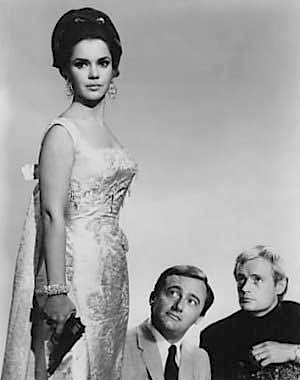
Monday, Dec. 13, 1965
Robert Vaughn hosts Hullabaloo. His guests include The Supremes, The Four Tops, The Serendipity Singers and the Goldberg Miller Blues Band.
Tuesday, Dec. 21, 1965
“Thunderball,” fourth in the James Bond series, opens one year after “Goldfinger” at the absolute peak of Bondmania and the spy craze, becoming the most popular (in terms of ticket sales) Bond film ever. As they did for “Goldfinger,” theaters stay open 24 hours a day to accommodate crowds. “Thunderball’s” opening playdates gross 30 percent to 50 percent more than “Goldfinger’s” record-breaking receipts. “Thunderball” plays at first-run houses for up to five months, then at neighborhood theaters throughout the summer of 1966.
Tuesday, Dec. 28, 1965
Shooting starts on “The Bridge of Lions Affair,” second two-part story that will later become the fourth feature film.

